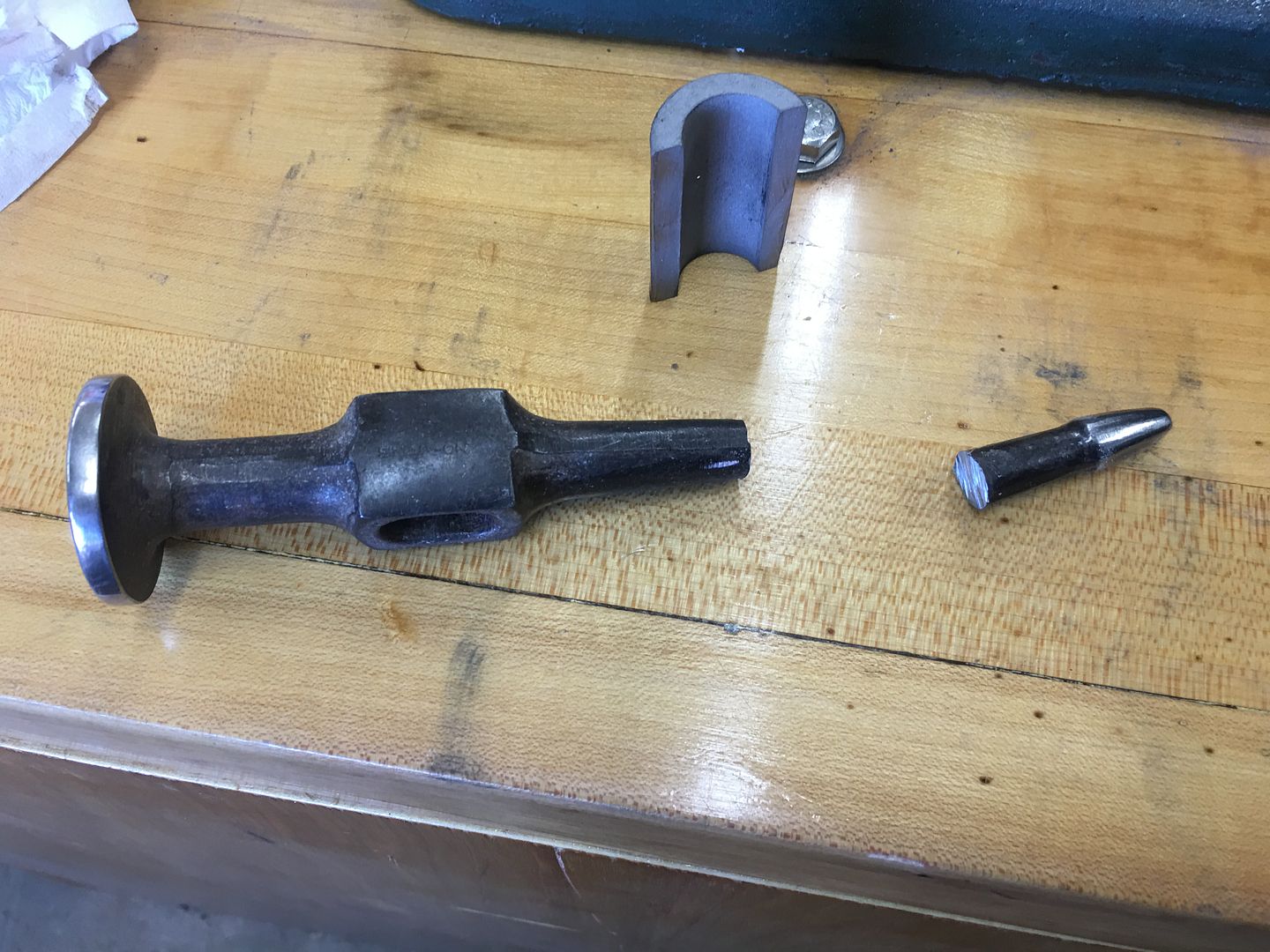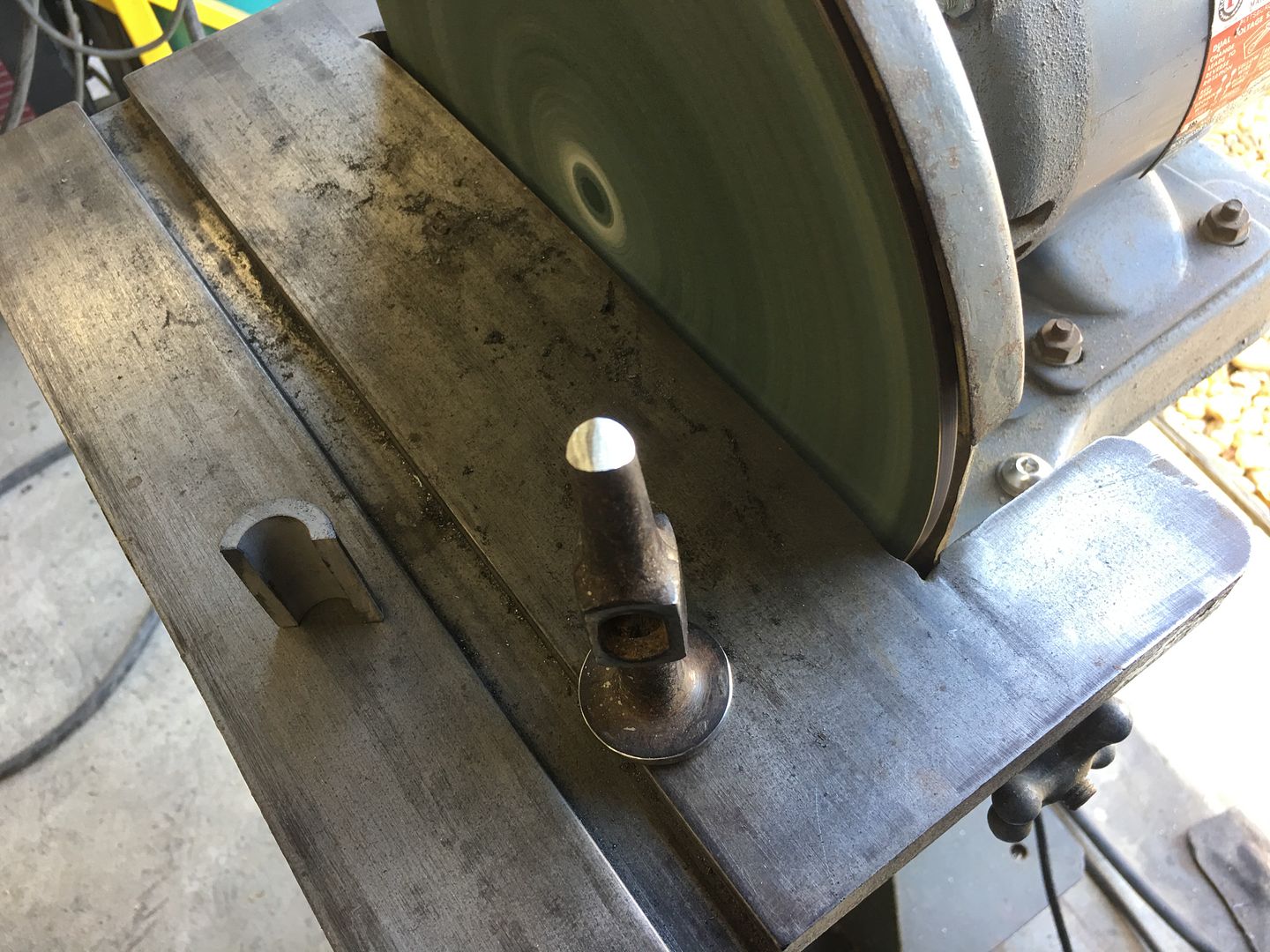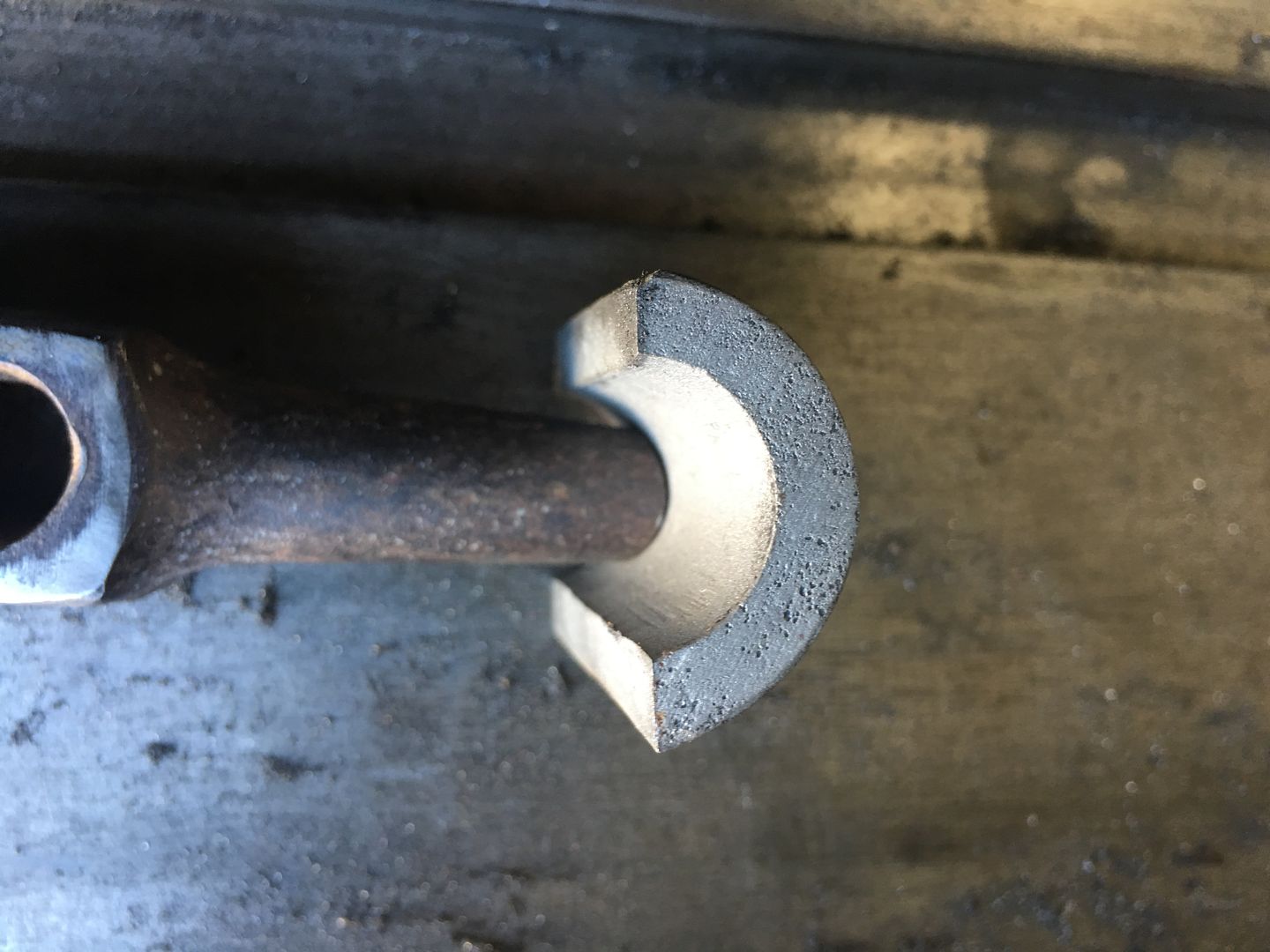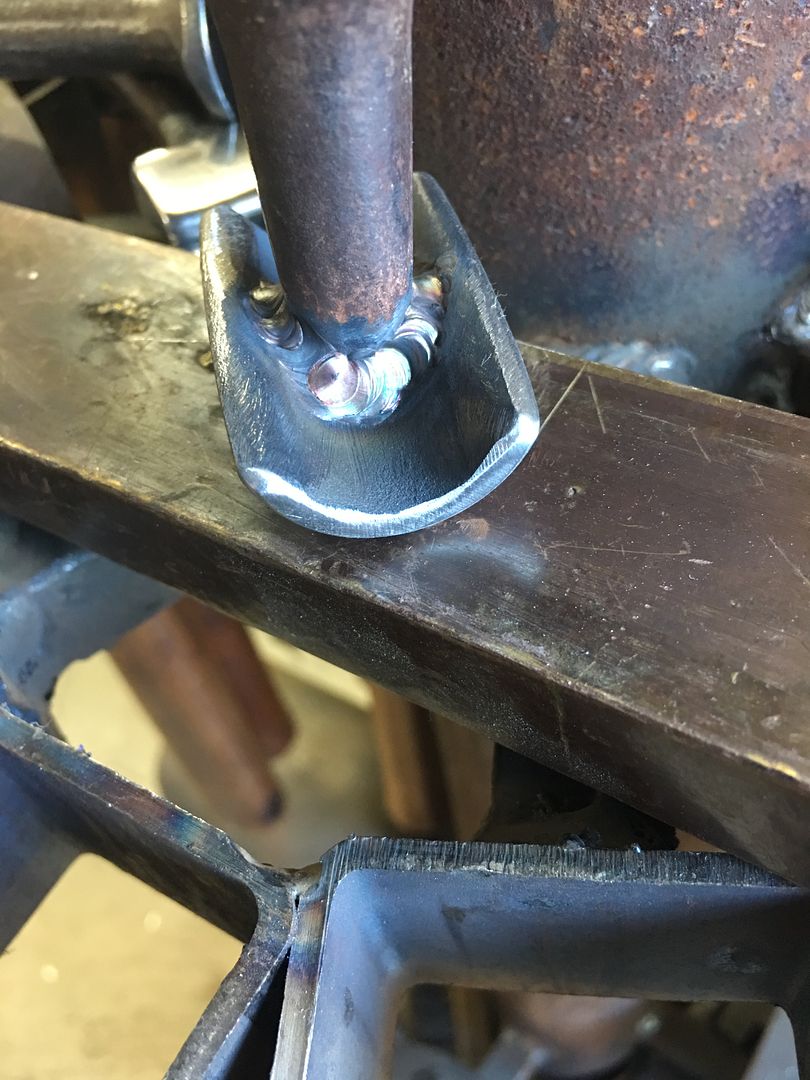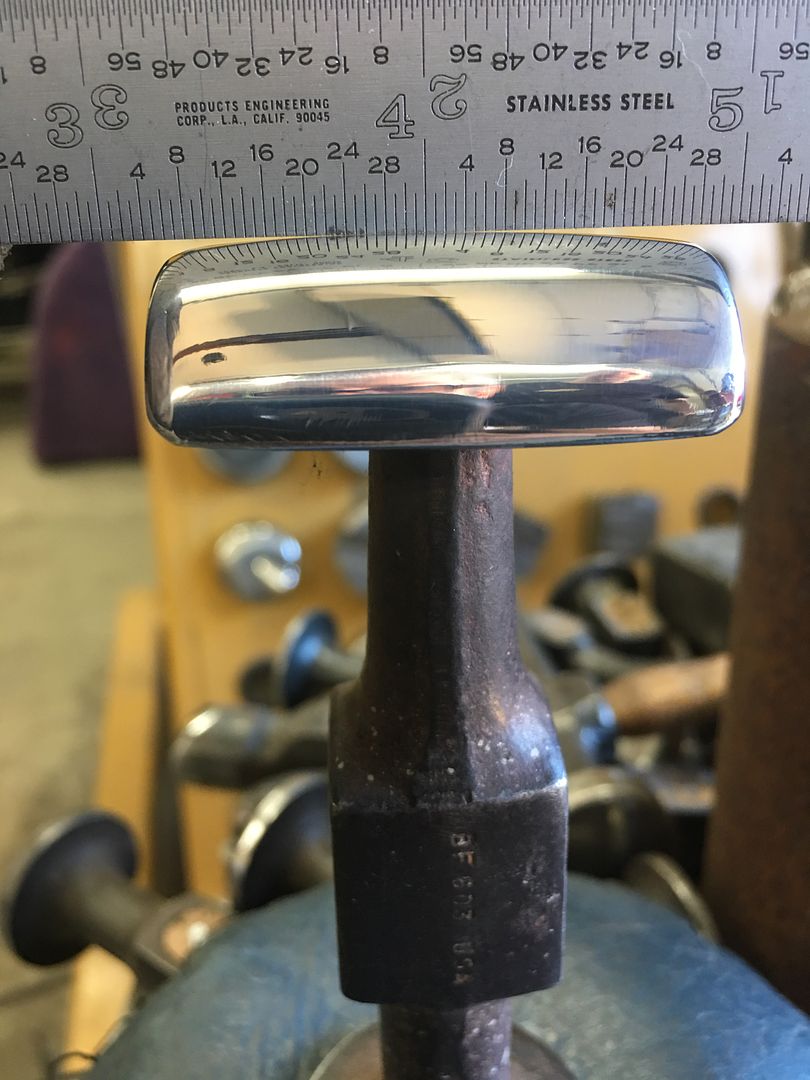Hey folks, thanks in advance for any advice you might have.
I have a lower quarter patch panel for my 68 dodge coronet, and have been debating the best shape to use to minimize warpage (MIG welding). Chris' "patch panel advice" sticky thread has been a great resource. My goal with this patch is try and make the cuts along body lines, avoid low crown areas, and replace as much as makes sense.
A quick introduction to the problem, the area inside the yellow circle was in bad shape, to the point that I started out assuming I would have to go with the green or red line for the cut. The area in question was caved in along the lower body line and below it, and was bumped out almost 1/2" above it due to something sliding across the trunk multiple times. However this afternoon I decided I would try and put some of my newly acquired metal bumping skills to work and just see what happened. I'm actually pretty happy with the results, its a little bumpy (+/- metal thickness) but I think with a little more work a very light skim of filler would be enough.
The options I think I have are to cut along:
The patch panel itself is not much bigger than the red line, so that's about the extent of my options. It is cut square, so technically the green/red cuts from wheel well to upper body line could be vertical which involves cutting that accent body line at the wheel well at more of an angle.
Biggest question I guess is, should I be concerned about welding from the wheel well to the upper body line? Or would I be better off trying to keep as much original metal as possible.
One other thing to mention, I do have access to the back of the quarter, trunk pan and extensions are out at the moment.
Thanks again!

I have a lower quarter patch panel for my 68 dodge coronet, and have been debating the best shape to use to minimize warpage (MIG welding). Chris' "patch panel advice" sticky thread has been a great resource. My goal with this patch is try and make the cuts along body lines, avoid low crown areas, and replace as much as makes sense.
A quick introduction to the problem, the area inside the yellow circle was in bad shape, to the point that I started out assuming I would have to go with the green or red line for the cut. The area in question was caved in along the lower body line and below it, and was bumped out almost 1/2" above it due to something sliding across the trunk multiple times. However this afternoon I decided I would try and put some of my newly acquired metal bumping skills to work and just see what happened. I'm actually pretty happy with the results, its a little bumpy (+/- metal thickness) but I think with a little more work a very light skim of filler would be enough.
The options I think I have are to cut along:
- Orange line
Pros: Avoid having to weld across the relatively flat section between the wheel well and the upper body line.
Cons: Have to smooth out the area inside the yellow circle to a reasonable finish. - Green line
Pros: Don't have to deal with area in yellow (and a few other miscellaneous bumps and bruises), horizontal weld is below upper body line
Cons: Welding across low crown area between wheel well and upper body line - Red line
Pros: Don't have to deal with area in yellow and don't have to deal with filling emblem holes and the indentations the emblems left
Cons: Welding low crown area between wheel well and upper body line, horizontal weld is above upper body line (easier to see?)
The patch panel itself is not much bigger than the red line, so that's about the extent of my options. It is cut square, so technically the green/red cuts from wheel well to upper body line could be vertical which involves cutting that accent body line at the wheel well at more of an angle.
Biggest question I guess is, should I be concerned about welding from the wheel well to the upper body line? Or would I be better off trying to keep as much original metal as possible.
One other thing to mention, I do have access to the back of the quarter, trunk pan and extensions are out at the moment.
Thanks again!

